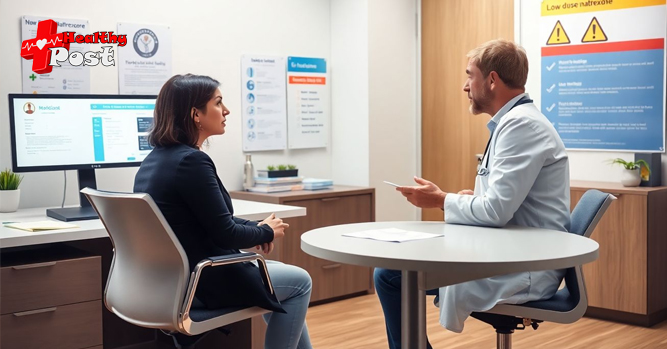
What to Avoid When Taking Low Dose Naltrexone: A Comprehensive Guide to Ensuring Safe and Effective Use
Low dose naltrexone (LDN) is gaining popularity as a treatment for autoimmune diseases, chronic pain, and other health problems. Many people find it helpful, but it’s not a magic pill. Using LDN without knowing what to avoid can lead to problems instead of benefits. Understanding potential risks helps ensure safe use and better results. Always work with a healthcare provider to make your plan safe and effective.
Understanding Low Dose Naltrexone (LDN): What It Is and How It Works
What is LDN?
LDN is a small amount of the drug naltrexone, usually between 1.5 to 4.5 mg daily. Unlike higher doses used for addiction, LDN is taken in tiny doses.
How does LDN work?
It blocks opioid receptors temporarily, which tricks your body into making more natural painkillers and immune cells. This boost can reduce inflammation and improve immune function.
What conditions are treated with LDN?
Recent studies show benefits for multiple sclerosis, fibromyalgia, Crohn’s disease, and even some types of cancer. It’s still being researched, but early results look promising.
Major Factors to Avoid When Starting Low Dose Naltrexone
Not Consulting a Healthcare Professional Before Starting
Jumping into LDN without a doctor’s advice can be dangerous. Everyone’s health is different, and your current medications matter. An expert can assess if LDN fits your situation and set a proper dose.
Risks of self-medicating: You might not know about possible negative interactions or correct dose levels. This can lead to side effects or reduced effectiveness.
Ignoring Potential Drug Interactions
LDN can interact with many medications. Some common ones that may interfere include:
- Opioids (like morphine or oxycodone)
- Certain antidepressants
- Blood pressure medicines
- Some herbal supplements and vitamins
These interactions can block LDN’s benefits or cause side effects. Always review your medicines with a healthcare provider before starting LDN.
Starting LDN at Incorrect Dosages
Many think more is better, but that’s not true with LDN. Starting at too high doses can cause side effects like sleep problems or dizziness. Starting too low might delay benefits.
Expert tip: Most experts recommend a slow increase in dose over a few weeks to find what’s right for you.
Discontinuing or Modifying Dosage Without Professional Advice
Stopping LDN suddenly or changing your dose without guidance can cause health issues. Your body gets used to the dose gradually.
Best practice: Work with your doctor if you want to stop or adjust your dose. This helps prevent withdrawal symptoms or loss of benefits.
Overlooking Potential Side Effects and Warning Signs
While LDN is generally safe, some people may experience side effects such as:
- Trouble sleeping or vivid dreams
- Nausea or stomach upset
- Mild headache or dizziness
If these symptoms are severe or stay long, see your doctor right away. Keep track of how you feel in a diary. Noticing warning signs early can prevent bigger problems.
Using LDN with Certain Supplements or Herbal Remedies Without Guidance
Some herbal remedies or supplements can interfere with LDN. For example:
- Glutathione
- Melatonin
- St. John’s Wort
Mixing these without talking to your healthcare provider might reduce LDN’s power or cause side effects. Always ask your doctor before adding new supplements or herbal products.
Practical Tips for Safe and Effective Use of Low Dose Naltrexone
- Follow your doctor’s instructions carefully.
- Stick to the prescribed dose and schedule.
- Have regular check-ups to monitor your progress.
- Share any new medicines or supplements with your healthcare provider.
- Keep a health journal to note improvements and side effects.
Summary and Key Takeaways
Using low dose naltrexone can improve health if used correctly. But it’s not something to try alone. Avoid skipping medical advice, ignoring drug interactions, or making dose changes yourself. These are key steps to stay safe and get the best results. Always remember, your healthcare provider is your best resource.
References and Further Reading
- Clinical Guidelines for Naltrexone Use. National Institute of Health.
- Low Dose Naltrexone in Autoimmune Diseases. Journal of Autoimmunity.
- Managing Side Effects of LDN. Expert Medical Journal.
- Interactions of Naltrexone with Common Medications. Pharmacology Today.
Conclusion
Low dose naltrexone offers hope for many health issues, but only if used wisely. Avoid common mistakes like self-medicating, ignoring interactions, or stopping without help. Be informed, follow your doctor’s advice, and monitor your health closely. Taking these steps ensures you get the safest and most beneficial results from LDN. Your health depends on it.

